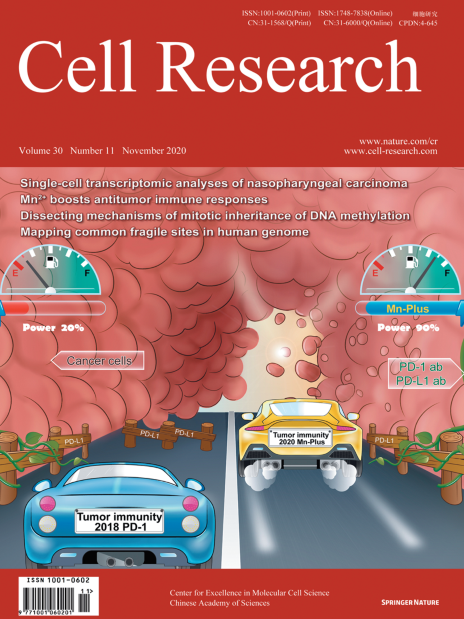
Advanced Search
Submit Manuscript
Advanced Search
Submit Manuscript
Volume 30, No 11, Nov 2020
ISSN: 1001-0602
EISSN: 1748-7838 2018
impact factor 17.848*
(Clarivate Analytics, 2019)
Volume 30 Issue 11, November 2020: 1009-1023
Genome-wide high-resolution mapping of mitotic DNA synthesis sites and common fragile sites by direct sequencing
Fang Ji1 , Hongwei Liao1 , Sheng Pan1,2 , Liujian Ouyang1,2 , Fang Jia1,2 , Zaiyang Fu1,2 , Fengjiao Zhang1 , Xinwei Geng1 , Xinming Wang3 , Tingting Li4 , Shuangying Liu1,2 , Madiha Zahra Syeda1 , Haixia Chen5 , Wen Li5 , Zhihua Chen5 , Huahao Shen5,6,* , Songmin Ying1,*
1Department of Pharmacology & Department of Respiratory and Critical Care Medicine of the Second Affiliated Hospital, Zhejiang University School of Medicine, Key Laboratory of Respiratory Disease of Zhejiang Province, Hangzhou, Zhejiang 310009, ChinaCommon fragile sites (CFSs) are genomic loci prone to the formation of breaks or gaps on metaphase chromosomes. They are hotspots for chromosome rearrangements and structural variations, which have been extensively implicated in carcinogenesis, aging, and other pathological processes. Although many CFSs were identified decades ago, a consensus is still lacking for why they are particularly unstable and sensitive to replication perturbations. This is in part due to the lack of high-resolution mapping data for the vast majority of the CFSs, which has hindered mechanistic interrogations. Here, we seek to map human CFSs with high resolution on a genome-wide scale by sequencing the sites of mitotic DNA synthesis (MiDASeq) that are specific for CFSs. We generated a nucleotide-resolution atlas of MiDAS sites (MDSs) that covered most of the known CFSs, and comprehensively analyzed their sequence characteristics and genomic features. Our data on MDSs tallied well with long-standing hypotheses to explain CFS fragility while highlighting the contributions of late replication timing and large transcription units. Notably, the MDSs also encompassed most of the recurrent double-strand break clusters previously identified in mouse neural stem/progenitor cells, thus bridging evolutionarily conserved break points across species. Moreover, MiDAseq provides an important resource that can stimulate future research on CFSs to further unravel the mechanisms and biological relevance underlying these labile genomic regions.
https://doi.org/10.1038/s41422-020-0357-y